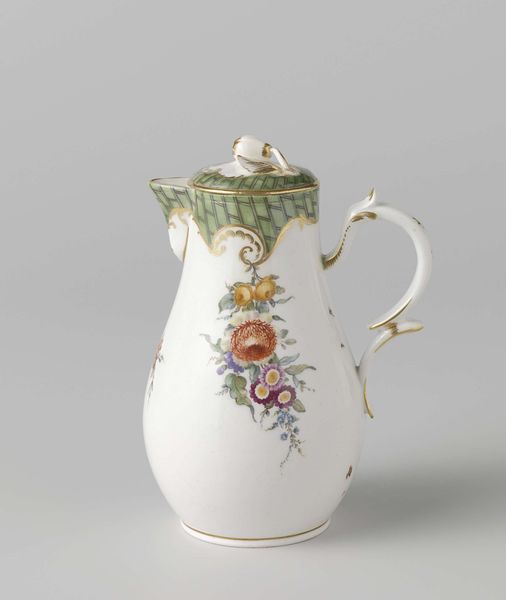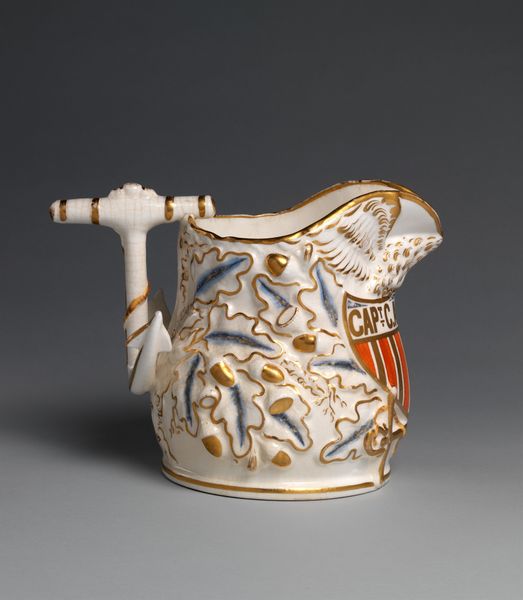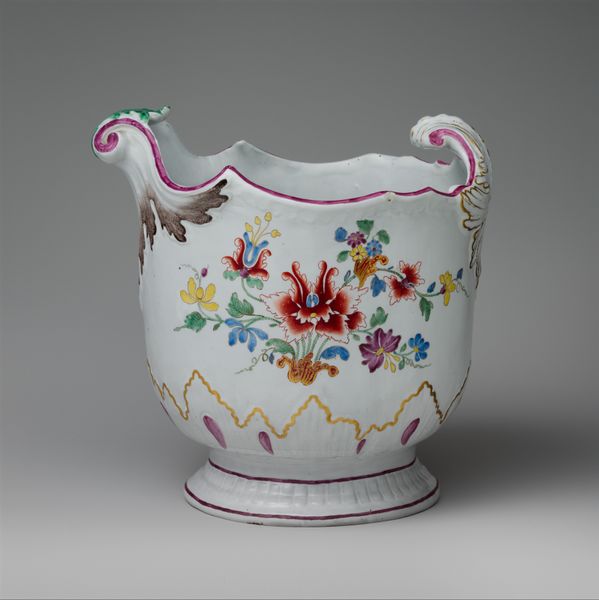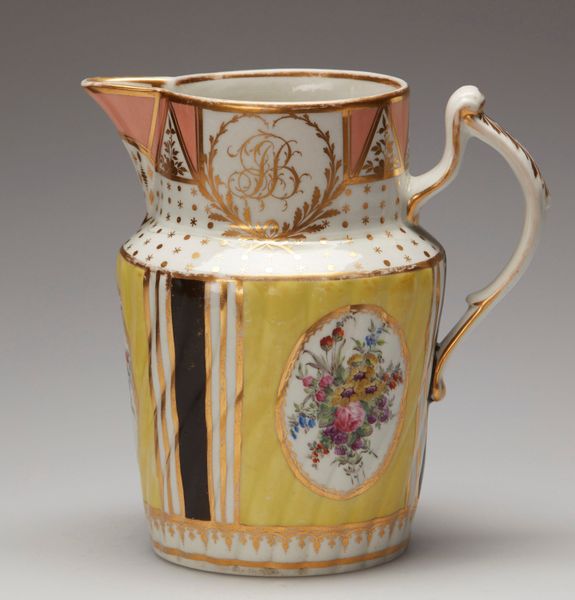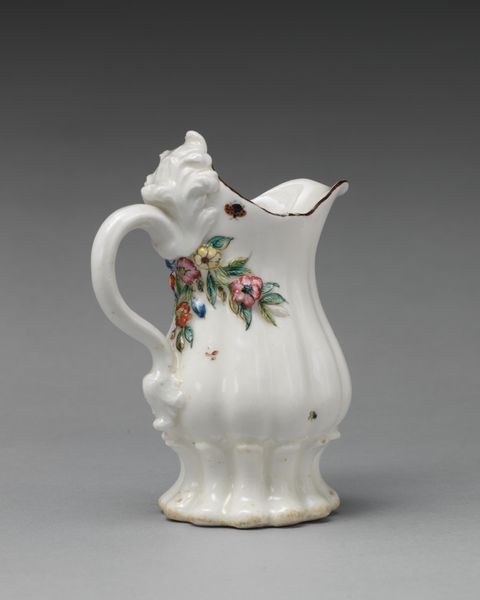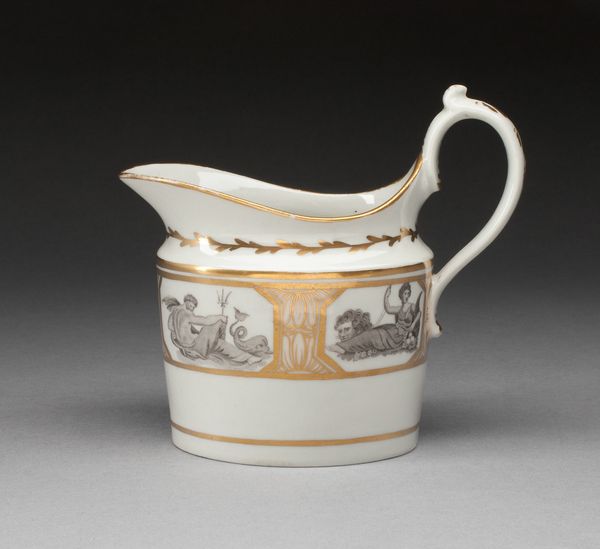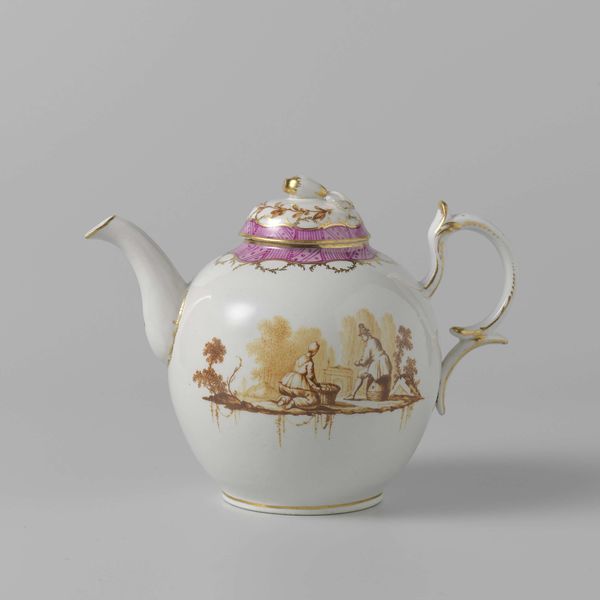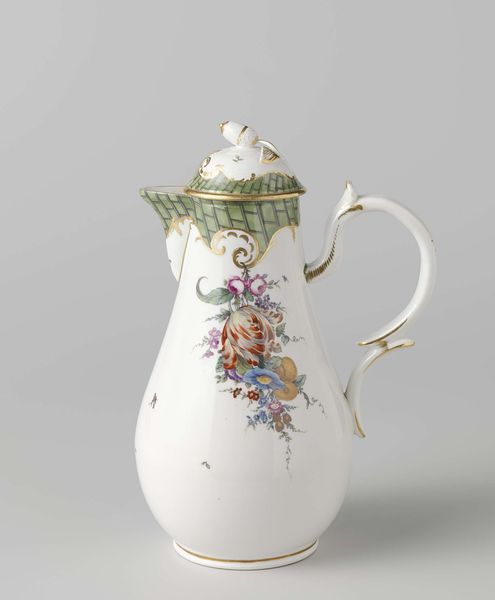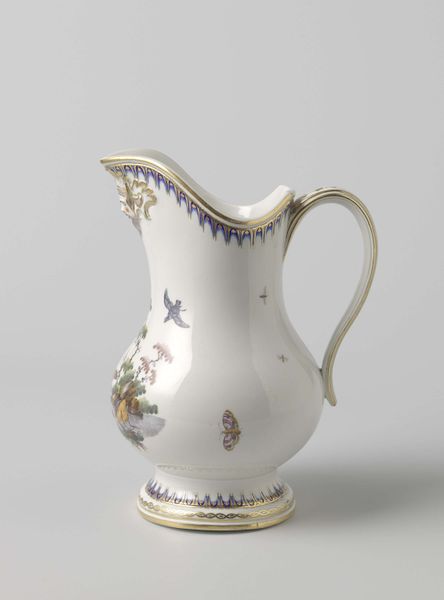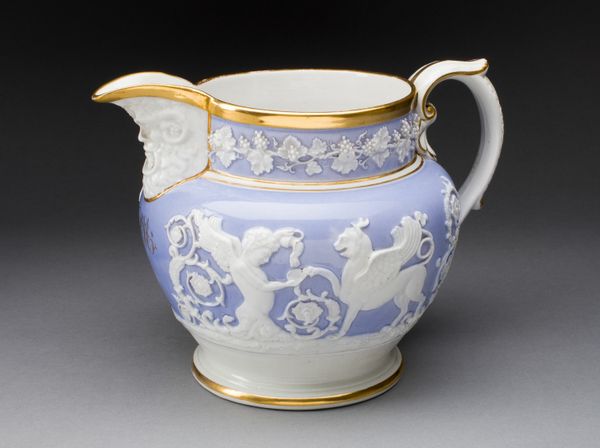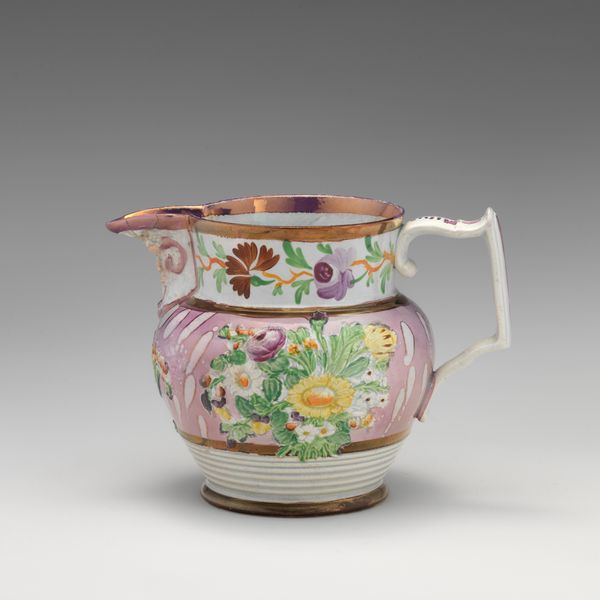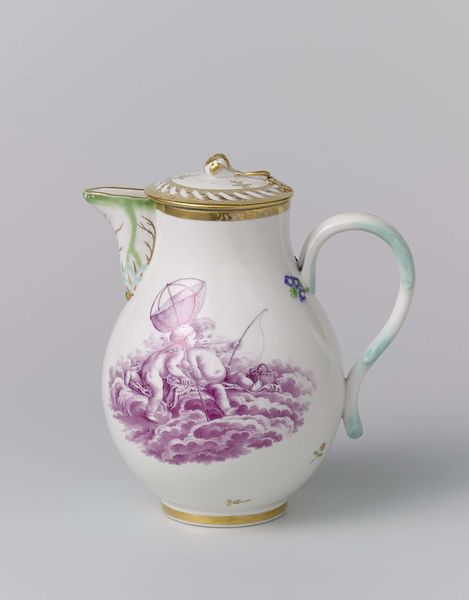
Dimensions: 24.8 × 26.7 cm (9 3/4 × 10 1/2 in.)
Copyright: Public Domain
Editor: We’re looking at a porcelain bar pitcher, dating from around 1880, by Karl L.H. Müller. It’s quite ornate! There are figures in relief, and the spout and handle are sculpted like animal heads. What strikes me is its almost theatrical quality – it feels like a prop from a play. What do you see in this piece? Curator: I see a potent symbol of late 19th-century aspirations, viewed through the lens of burgeoning industry and social stratification. Porcelain like this wasn't just for utility; it was a statement of status. Notice the baroque-revival style; it harks back to an era of aristocratic power, which by 1880 was being challenged by a rising merchant class eager to display their wealth. Editor: So, it’s a kind of aspirational object, mimicking the aesthetic of the old elite? Curator: Precisely! But consider the bar pitcher's context. It was displayed and used, a theatrical piece in the domestic sphere where new societal roles were being played out. Think about the act of serving a drink – who serves, and who is served? What does that signify in this historical moment? The object becomes a stage for reinforcing and questioning social hierarchy. Does the figuration offer clues, perhaps to contemporary events or figures? Editor: Interesting! So it's not just decorative, but also communicates power dynamics? I hadn't considered that. Curator: Exactly. Even its presence in a museum now raises questions. Who decided this pitcher was worthy of display, and what narratives are we perpetuating by showcasing it? Editor: That’s a fascinating perspective, thinking about how the object and the institution work together to tell a story. Curator: Indeed. This pitcher isn't just a pretty object; it's a cultural artifact laden with social meaning, even today. Editor: I'll definitely look at decorative arts differently now, seeing them as active participants in historical narratives, rather than passive reflections of taste. Thanks!
Comments
No comments
Be the first to comment and join the conversation on the ultimate creative platform.

